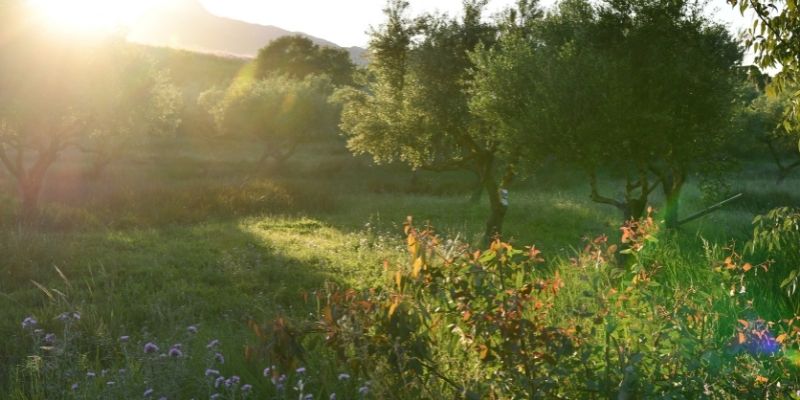
by Lauren Cormier
There are countless ways to diversify our orchards by incorporating perennials, woody plants, annuals, and bulbs. Companion planting creates more pollen sources for native bees while also performing functions like deterring pests, creating shade tolerant ground covers, or even helping keep down fruit diseases like the notorious apple scab.
Before we plant companions through the understory, we consider mowing and foot traffic so plants don’t become trampled when fruit is being harvested. Very few can thrive directly underneath an apple where there is shade, compaction, and drops. For these spots, only the most resilient ground covers will thrive. If possible, place companions where there will be as little compaction as possible.
Many herbaceous perennials spread over time, especially in fertile soil, so we try to plant them where they won’t quickly be spreading up against the trunks of trees. We plant at least a foot or two away from the trunk and typically reserve these spots for low-growing plants, daffodils, ground covers, and low growing herbs. For taller companions, we create wild areas where they can spread out en masse. Having large swathes of the same species makes it easier for pollinators to jump from flower to flower, gathering pollen with efficiency.
Here are some of the best ways we’ve found to incorporate companion plantings into the orchard.
Best Places to Plant Companions
Orchard Rows
In an orchard setting, it’s easiest to mow straight through orchard rows rather than navigating around trees. This leaves spaces in between trees a perfect place to plant perennials. Dried stalks can be cut back with pruners, scythed, or mechanically mowed depending on the scale and type of plants. We encourage mowing after the flowers have completely gone by, leaving the flower heads full of seed as long as possible for the birds. If planting an orchard from scratch in a field, tilling the orchard rows first will leave the spaces between trees open for planting companions. We recommend using a thick layer of wood chips around perennials while they are getting established, so they don’t become smothered by grass.
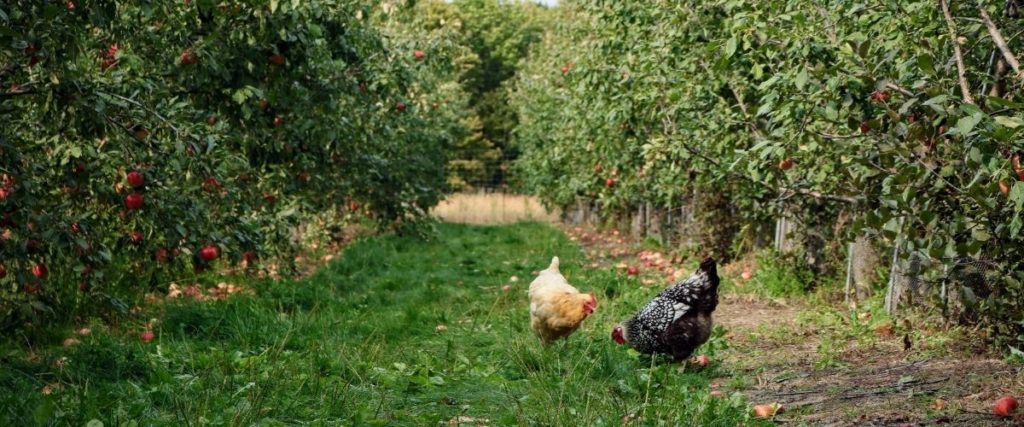
Hedges
Allowing wild hedges to grow around the perimeter of the orchard is an excellent way to increase biodiversity and create habitat for insects and birds. If planting cherries, blueberries or haskaps, attracting bird activity might be the last thing we want to do, but for apples and many other fruits, it’s no issue to have songbirds around. Our hedges are a combination of native woody plants and perennials.
Pollinator Gardens
In smaller settings, a pollinator garden, or even just a patch of native flowers near the orchard can be a vital source of pollen for many different insects. Many sun loving natives are very easy to grow and require little maintenance except cutting back dead stalks in fall or spring. When planting for pollinators, planting seedlings of the straight species is better than cultivars that have only been improved for our desires, and not to the benefit of pollinators. Pollinators have co-evolved with the native plants in their bioregion over the millenia. Some have symbiotic relationships like the Monarch butterfly and Milkweed where one species cannot continue to exist without the other. We plant genetically unique seedlings for biological diversity among the frilly double flowered cultivars we have come to love.
Field’s Edge
The edge of the field is a very biologically diverse place, especially when it is bordered by woods or a canopy of shade trees. It can be made even more diverse when interplanted with less common natives. The diversity in the field’s edge results from the convergence of two different ecosystems, as well as having partial sun, making it unique from the surrounding environments. We recommend only planting natives near the woods in effort to be extra cautious about potentially introducing foreign species into the forest ecosystem. There are many woody shrubs and herbaceous perennials that want mixed sun and shade rather than all of one or the other such as in woods and fields.
Wet Areas
We take advantage of the low areas around the orchard as a place to plant woody companions that attract beneficial insects, sometimes creating hedges and thickets for songbirds and other wildlife. Some of our favorite herbaceous perennials also love these damp spots. Mulching can help eliminate the need to mow and make tire ruts in soggy areas.
The Functions of Orchard Companions
Here’s seven functions that companions play in our orchard and why we love them. We’ve attempted to categorize them, but bear in mind that many plants fall into multiple categories.
#1: Food & Medicine for Beneficial Insects
Some plants are especially good at drawing in insects that prey on pest populations, keeping some of the most destructive pests like aphids, apple maggot fly, and gypsy moth in check. These are often called beneficial insects and include syrphid flies, parasitoid wasps, and lady beetles. Not only do they keep pests in check, but many of them pollinate too. Apple pests like woolly apple aphids are considered secondary pests because their populations usually only become an issue when the beneficial insects that prey on them are killed off by pesticides or some other factor.
Dill
Dill, Anethum graveolens, is a member of the apiaceae family, all members of which are known for attracting beneficials with their large circular umbelliferous flowers made up of many tiny flowers. Tiny flowers make pollen accessible for tiny insects and when it comes to beneficials, many of them are on the smaller side. It doesn’t take long to come across some of the braconid wasps that parasitize apple maggot flies. We’ll take as many of them as possible. Allowing dill to go to seed may take the work out entirely, sowing itself for the next season’s pollinators. Grows tall with some stalks reaching over 5 feet in rich soil.
Coreopsis
There are many wonderful species in the genus of Coreopsis. One of our favorites is the beautiful dye plant Coreopsis tinctoria, an annual species which attracts beneficial hover flies and tachinid flies, among others. It won’t compete well with grass or even other perennials, but is perfect for seeding into areas that have previously been cultivated or can be weeded and mulched. Perennial species such as C. lanceolata, Tickseed Coreopsis are especially great used as a spreading ground cover for stabilization on dry, sandy, infertile slopes.
Phacelia
There are many different species of native Phacelia, some annual and some perennial. They all provide pollen and nectar over a long period of time and attract beneficial insects like parasitoid wasps, syrphid flies, and many species of bees. The annual, Phacelia tanacetifolia, is not only stunning, but has the well deserved common name, Bee’s Friend.
Buckwheat
The species of buckwheat used as cover crop, Fagopyrum esculentum, isn’t native but does a remarkable job of attracting beneficial insects and providing a source of pollen for bees. There are buckwheat species native to western US in the genus Eriogonum that can be used as well, but there is little that compares to standing next to a cover crop of buckwheat in June that sounds like an orchestra of bees. Can grow to be 3 feet tall or more
#2: Ground Covers
While most ground covers will not thrive directly under a tree due to shade, traffic, and drops, there are a few notable exceptions that can sometimes endure the conditions. They add to the diversity to what might otherwise just be grass and stay low to the ground. We plant them in spots where we want vegetation, but don’t want grass or taller perennials. We’ve experimented with planting ground covers in the mulch around trees, and often with limited success. Many perennials are vigorous and eventually spread too closely around the trunk over time, requiring maintenance and removal. If we plant companions near trees, we are careful about maintaining a safe distance from trunks. Here are a few ground covers that can be scattered throughout the orchard floor. As an orchard matures, there will be less sun and more shade, so the plantings may change over time from perennials that need full sun to those that do better with shade.
Arnica
Arnica chamissonis is a native perennial ground cover that spreads easily where there isn’t competition from grass. Grows about 1 foot tall and is easier to grow than the alpine native, Arnica montana. Flowers best in full sun with little shade and can be cut back after flowering and left on the ground for mulch. Arnica will sometimes flower twice in the same season if cut back after the first flower. It won’t compete with grass but it’s medicinal and helpful to have a few patches around to make oil infusions for the first aid kit each year.
Selfheal
Prunella vulgaris is a common native medicinal plant that will spread, tolerate shade, and even compete with grass to a certain extent. For many of us it has been a common sight, growing in lawns and gardens just about everywhere. Sometimes also called heal-all for its long use in herbal medicine. If seeded in densely, it can colonize to form a dense low growing ground cover in the orchard understory that doesn’t need to be mowed due to staying only about 1 foot tall, at most. The small purple flowers are attractive to pollinators, and also to us.
Violets
Viola sororia, a common purple violet and Viola blanda, a white flowered violet are native to eastern North America. They are low growing ground covers and one of the best to have scattered throughout the orchard. They can sometimes take over in the garden, but not an issue on the orchard floor where it has plenty of competition from grass. The benefit of violets is they can take shade and are one of the few plants that can sometimes survive under the apple canopy. They are also a primary food source for fritillary butterflies. Flowers and leaves are medicinal and a wonderful source of vitamins A and C sprinkled on salad.
Wild Strawberry
Fragaria virginiana is an endearing little plant that sometimes grows wild in acidic dry soils. We welcome it when we find it. The bees love the flowers and we love the tiny little edible strawberries that we find nestled amongst the leaves in June.
Canada Anemone
Anemone canadensis is our charming native low growing anemone species and an orchard companion because it can tolerate shade and also some light foot traffic after it has flowered in spring. Attracts beneficial flies and solitary wasps.
White Dutch Clover
Trifolium repens is not native and doesn’t tolerate shade all that well but is one of the most resilient ground covers for competing with grass and is most easily established on ground that has been cultivated beforehand. Fixes nitrogen and improves soil.
#3: Edibles
It’s great to make the best use of space in the orchard while trees are small and taking advantage of the sunlight by growing crops within the orchard boundaries. Perfect for perennial greens and edibles, especially those that actually benefit the orchard. Whether they are being used to draw in beneficial insects, build up soil, or help prevent scab, edibles seem to be a natural fit for the orchard. Here are a few of the most delicious.
Sorrel
Seeding in Sorrel, Rumex acetosa, the improved french heirloom type…(ehem, not the pervasive small-leaved weed growing in our lawns and field with acrid flavor) can make an excellent groundcover where there isn’t much walking happening. Not only delicious, sorrel also accumulates nutrients from deep within the soil and brings them up where they can be made accessible to plants. Can be seeded in as a ground cover around establishing trees and won’t spread by runners like the wild type.
Chives
Allium schoenoprasum has antifungal properties that can help prevent scab when planted near apple trees. Chives can also be made into a foliar tea to be sprayed as a holistic preventative to fungal pathogens. Loved by pollinators and thought to be repellant to pests. Chives and apples are the best of companions to each other.
Parsley
Parsley, Petroselinum crispum, is not only one of the most healthy plants we can be eating every day, but it’s also one of the best fodder for beneficial insects, when allowed to flower. It’s a very important host plant for the black swallowtail butterfly. Like dill, parsley is a member of the Apiaceae family and has yellow flowered umbels, cymes containing many small flowers, that draw in beneficial insects.
Scallion | Bunching Onion | Welsh Onion
Perennial alliums like scallions can be planted around trees to help deter borer and rabbits from chewing on bark. Allium fistulosum grows to be approximately 1-2 feet tall and has a bunching habit unlike the spreading perennial onions. Plant it at least a couple feet from the trunk of apples.
#4: Living Mulch
Some leafy plants have tap roots and extensive root systems for bringing up nutrients from deep below the soil surface. Legumes have nitrogen-fixing nodules on roots that improve soil when they get cut back. Plants used for mulch can be mowed and allowed to decompose around trees. Some are annual and some are perennial, and all are wonderful for incorporating organic matter back into the soil.
Borage
Borage can be used like a living mulch that will sometimes self-sow itself each year. We like it better than using comfrey near trees because it doesn’t grow tall and spread up against the trees where it can never be removed. Borgae stays relatively small, growing between 1-2 feet at most.
Chicory
Cichorium intybus accumulates zinc and other important nutrients from deep down with a long extensive tap root. The zinc can be absorbed by tree roots when chicory is left as mulch to decompose around trees. Stalks can grow to be up to 4 feet tall so chicory needs the right place where it won’t be in the way.
Crimson Clover
Trifolium incarnatum is an annual clover with bright beautiful flowers that can be used as a green manure when seeded into areas that have been cultivated beforehand. Improves soil quickly. Grows to be about 1-2 feet tall.
Sweet Pea
Unless we’re willing to get creative, sweet peas should probably not get planted right around the trees where they will actually be touching the tree, but they’ll improve fertility when planted along fencing, posts, buildings, or just about any other vertical structure that can serve as a trellis. At the end of the season the foliage can get cut back and used as mulch.
Yarrow
Yarrow is another common native medicinal herb which accumulates minerals from deep within the soil and brings them up where they can be made accessible to trees. An all around incredible plant for building up nutrients in soil and as an addition to compost. Flowers will be buzzing with beneficial insects all day long. Stalks get to be about 2 feet tall and can be cut back and used as mulch after flowers go by.
#5: Pest Deterrents
The volatile compounds which give aromatic herbs their fragrance also deter pests and is why they have been used as repellents for mosquitoes and other biting insects for thousands of years. Bitter aromatic herbs are mildly toxic to some of the most harmful insects like codling moths, aphids, and the ants (which aphids depend on for transport onto tenderly growing apple tree stems). When insects sense volatile compounds through their olfactory receptors, they steer clear. Here are a few known to keep down pests.
Catnip
Nepeta cataria, catnip, is most certainly the cat’s favorite, and also one of ours. It’s especially great in the orchard where it can reseed itself wherever it pleases. It repels aphids and also ants, which are needed by aphids for transport to fleshy tree stems. Plants can sometimes grow to be 3 feet tall or more so plant it where it won’t be in the way.
Daffodils
There are numerous species of Narcissus, no one knows exactly how many, and all of them are known to deter voles from chewing on the trunks of our trees. In fall, daffodil bulbs can be planted in a circle about one foot out from the trunk, bulb to bulb, to be used as a physical barrier to keep voles from trunks. It’s important for bulbs to be far enough away from the trunk that foliage isn’t up against the tree through the summer. Daffodils seem quite at home in the orchard, even in the grassier areas.
Hyssop
Anise Hyssop, Hyssopus officinalis, as well as Yellow Hyssop are highly aromatic herbs that deters pests with a pleasant yet pungent aroma. While not native, it still attracts butterflies and bees with abundant nectar. It’s also highly medicinal and has deep blue purple flowers which cannot be seen without being deeply admired in full bloom. Grows to 2 feet tall and can be cut back in fall and left as mulch to decompose.
Nasturtiums
Nasturtiums, Trapaeolum majus is a favorite edible annual flower also known to attract aphids. When not being added to our salad, they can be used as a trap crop to keep woolly apple aphids off trees when planted in mulch rings. If nasturtiums start attracting aphids, clear out infested vegetation so they don’t eventually hop over to the tree. They’re also reported to help deter borers. Staying under a foot tall and covering the ground through summer, they’re the perfect height to plant as a living mulch around young trees, needing little maintenance if any. Let the frost take them in the fall and with any luck they’ll go to seed for next year.
Mountain Mint
Mountain Mint, Pycanthemum pilosum, is our eastern native mint and one of the best for drawing in beneficial insects with pollen while at the very same time repelling pests with it’s strong aroma. Amazing! A less intrusive alternative to peppermint and others that quickly spread and are nearly impossible to move. Mountain mint has a bunching habit and if planted near trees, can be scythed or mowed down and used as mulch.
Thyme
Thymus vulgaris repels pests and stays low to the ground. Needing full sun, it is best suited for orchards with young trees where there is full sun. Varieties of creeping thyme, T. praecox, can also be used in places without heavy foot traffic or compaction from mowing. Thymes won’t tolerate competition from grass. Culinary thyme can be a short-lived perennial in zone 5 and colder.
#6: Pollinator Plants
Pollinators are not only bees but butterflies, moths, bats, hummingbirds, and even beetles. They’re essential for fruit and seed production in all plants, and ultimately sustaining life on planet earth as we know it. It is estimated that they produce up to 40 billion dollars worth of food crops annually (see https://www.pollinator.org/pollination). It’s no secret that pollinators are in a disastrous decline and the time has come to plant as many native plants as possible. When we plant native plants in our orchards, we increase pollinator populations near fruit trees, improving overall fruit production. While honeybees are great for pollinating apple blossoms, we intentionally aim to increase our native bee populations as much as possible. Many native bees, like the solitary mason bee, are more efficient at pollinating apple trees than honeybees.
Bee Balm
When it comes to pollinator plants, one of the best is our native bee balm, Monarda fistulosa. Wild Bergamot, as it is also commonly called, is a medicinal herb that is loved by butterflies, hummingbirds, and bees of all kinds. Easy to grow with stalks reaching 3 feet or more during summer. Can be cut back to be used as mulch after flowers go by.
Blue Vervain
A towering native plant, Blue Vervain can grow over 5 feet tall and best suited for hedges, pollinator gardens, or off in a wild patch somewhere. A favorite plant amongst native bees and a highly medicinal flower that can be tinctured and used for medicine.
Boneset
One of our favorite medicinal pollinator plants, not long ago Boneset was a common sight hanging from the rafters of farm houses for immediate use whenever someone were to get sick with flu. It’s delicate white flowers attract insects of all kinds and will grow over 4 feet tall in rich soil, making excellent mulch when cut back in fall.
Echinacea
Echinacea purpurea is a highly medicinal midwestern native, a favorite amongst butterflies and birds. Leave the cones filled with seed for bird forage late summer and fall. Second year roots can be harvested for an immune boosting tincture or dried for tea. There are a few different native Echinaceas including E. paradoxa and E. angustifolia that are not quite as easy to grow as Echinacea purpurea, but certainly worth trying.
Milkweed
Asclepias syriaca is a really great weed that isn’t really a weed at all because it’s essential for monarch butterflies. The one downfall is that it’s toxicity to livestock makes it difficult for many farms to encourage. Where livestock and other crops such as hay or cereal are not a concern, milkweed is great to have around. Asclepias is the only plant genus that monarch caterpillars can eat, making it essential to the survival of the species. There are a few different species of milkweed and all of them are butterfly magnets. It can take over in the garden and be difficult to remove so plant it where it can be in a permanent patch somewhere, like steep areas that are difficult to mow. We also recommend Swampy Milkweed, Asclepias incarnata, and the vibrant orange Butterflyweed, Asclepias tuberosa.
Rudbeckia
There are many species of coneflowers in the Rudbeckia genus, some being annual, others biennial, and many being perennials. All are loved by butterflies and bees. Rudbeckia hirta is a perennial with vibrant golden flowers that can brighten anyone’s day just with one glance.
#7: Woody Plants for Wet Areas Around the Orchard
Areas that are too wet for fruit trees can be planted with native woody shrubs, allowing them to grow into thickets and hedges over time. We mulch these plantings with a thick layer of wood chips in an attempt to reduce mowing in future years. Many woody shrubs and trees flower early when pollen sources can be scarce. Others have an extended flowering time during the middle of the summer. Planting a combination of plants with different flowering times will ensure pollinators always have plenty, no matter if the time is spring or fall. Since there are not many native shrubs that flower in fall, we allow the goldenrod and asters to flower as much as possible throughout the latter part of the season.
Willow Members of the Salix genus are among the earliest pollen sources for native bees when little else is blooming yet. Standing under a weeping willow in spring is pure delight when the tree is humming with bees. Willows also attract beneficial insects like parasitoid wasps. There are many different species of native willow, all growing to different sizes.
Elderberry There are a couple of different native species of Sambucus, both of which attract beneficial insects with their large wide cymes composed of tiny white flowers. Sambucus canadensis is the one many of us think of because of it’s highly medical berries are used for everything from cough syrup to elderberry pie. Red Elder, or S. racemosa is also used for pollinators, and has fruit eaten by wildlife. Elderberries vary in height but some can grow to be 12 feet tall.
Buttonbush Cephalanthus occidentalis is one of the few woody plants to bloom mid summer. The large globular flowers that cover the plant attract crowds of beneficial insects over a long span of time. While it is suited to wet areas like a pond’s edge, it will also do well in areas that dry out too. Can grow to be up to 12 feet tall.
Dogwood There are so many species of dogwood, a genus of plants that can be a little confusing only because they are sometimes seen as Cornus, and other times Swida. Many dogwoods are native to the northeast and flower beautifully in May, attracting many beneficial insects to their large white cymes consisting of many small flowers. There are a range of different sizes and growth habits, some suckering more than others. Fantastic for wildlife hedges and thickets, many species will do well in low areas where water collects. Some of the best for wet areas include Redosier, S. sericea, and Silky Dogwood, S. amonum. Dogwoods have a range of sizes and growth habits which make them suited to different places.
Summersweet For those wanting a smaller shrub stuns with fragrant flowers and takes partial shade, Clethra alnifolia might be the one. Long white panicles of flowers attract pollinators through summer, though it can be hard to not want to bring them all inside to a vase where we can enjoy their scent. Grows to be 5-6 feet but can be pruned to stay smaller. One of our all-time favorites. Grows in damp soil but will also do well in drier areas where soil is rich and there is partial shade.
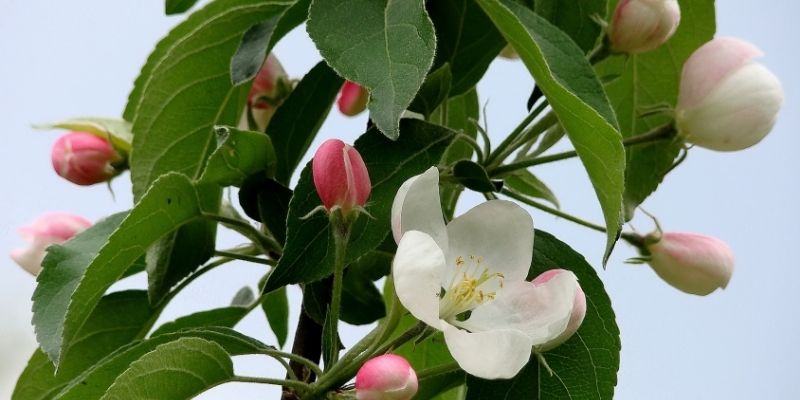

The Orchard Ecosystem
We hope this inspires some ideas, which will hopefully lead to even more ideas of what can be planted in the orchard. It’s not so much about the individual parts as creating a larger ecosystem whole with as much biological diversity as possible. We can make our orchard whatever we want, and in the process it can eventually become a dynamic place of its own where agriculture and nature intertwine. While there is some nature, like deer, that inevitably must stay out in order for us to ever have a chance at growing fruit, the orchard will benefit by having as many beneficial insects and pollinators within the boundaries as possible.
The options for companion plants are vast, and the more we diversify, the better. Some of the medicinal plants and cover crops we use in our gardens have come over from Europe and Asia, and while they draw in pollinators, and have a permanent place in our garden and hearts, the native plants are the absolute best for sustaining our native insect populations. Plant and insect species have co-evolved together over time, creating symbiotic partnerships that cannot be replaced with non-native plants. When we plant non-native plants for food and medicine, we try to balance it out with plenty of those who have their origin in our region.
The options for companion plants are plenty, and this list is only a beginning to what is possible for an everblooming orchard, buzzing with pollinators, rich with biological diversity, and maybe even keeping those pesky pest populations at bay.

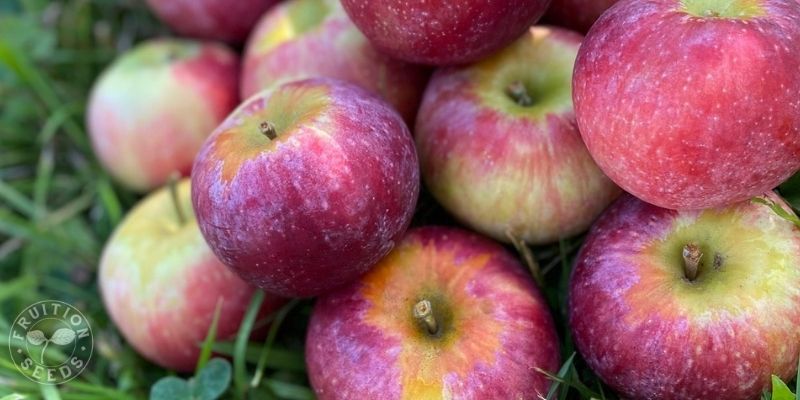
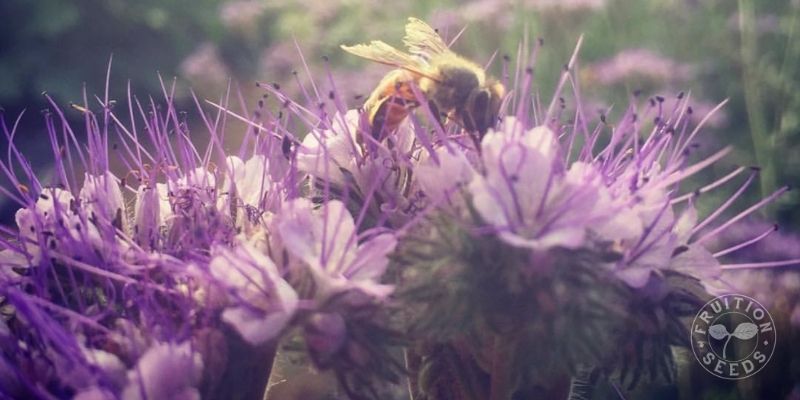
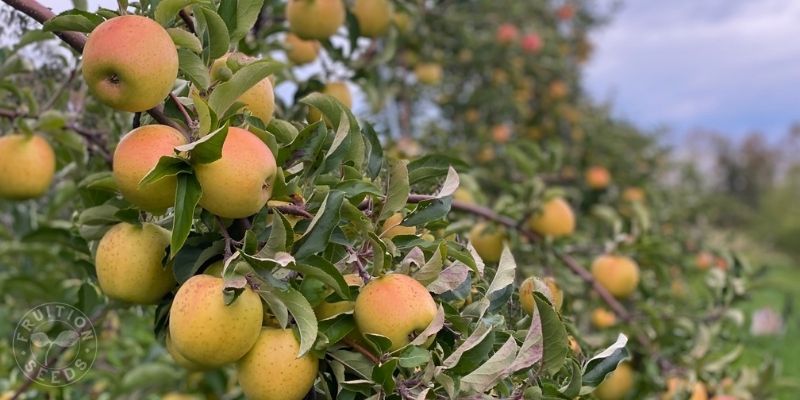
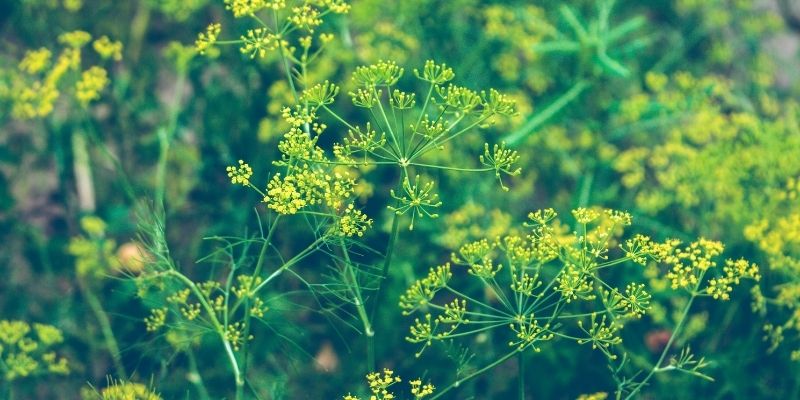
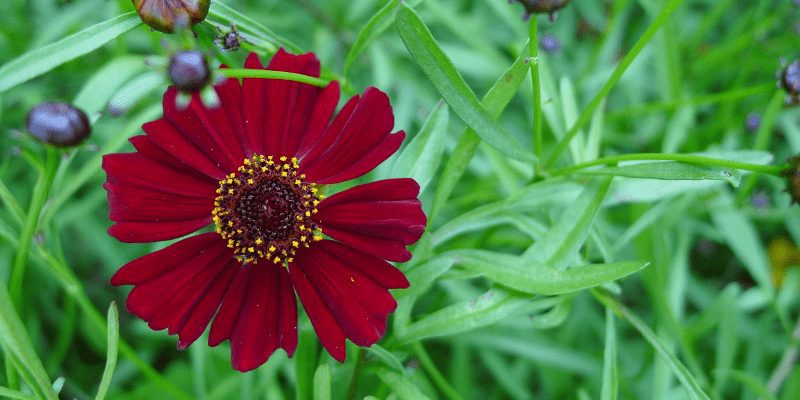
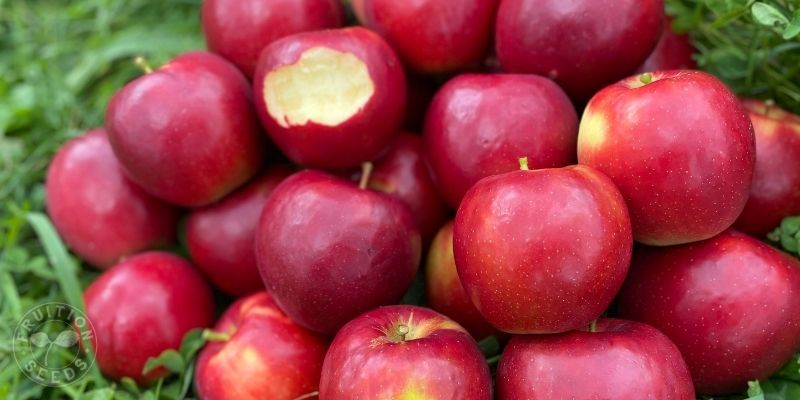
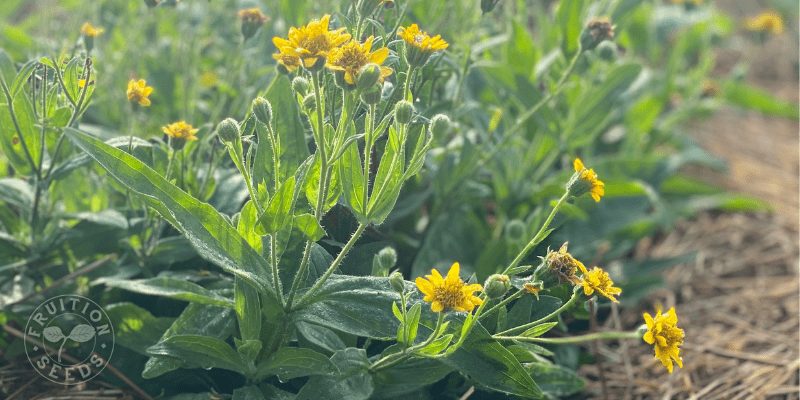
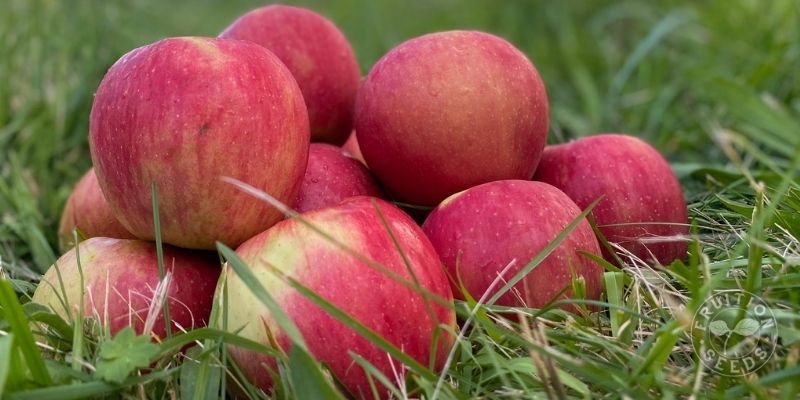
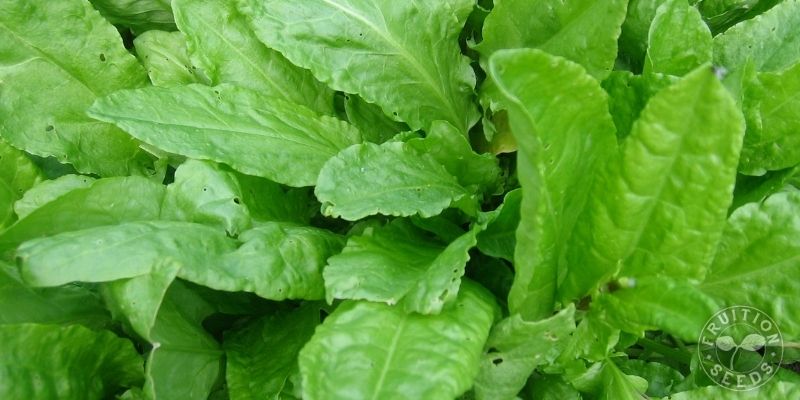
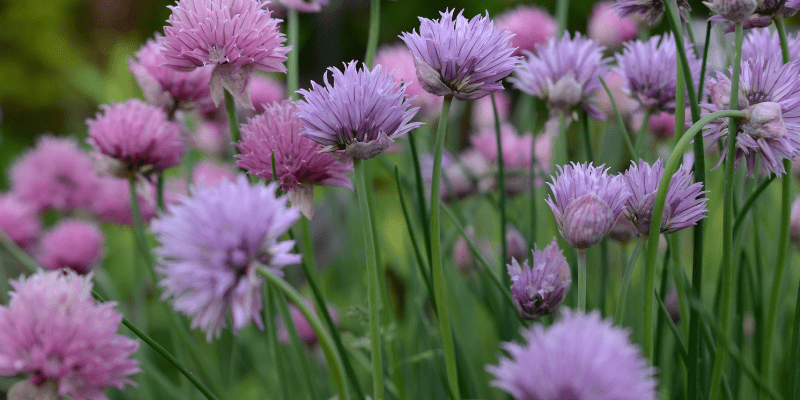
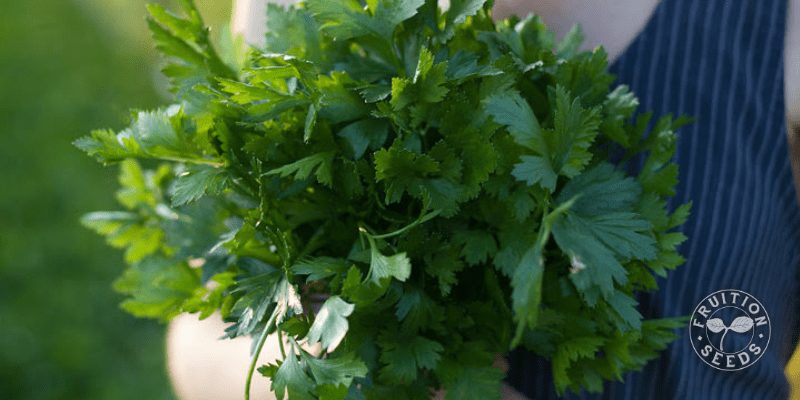
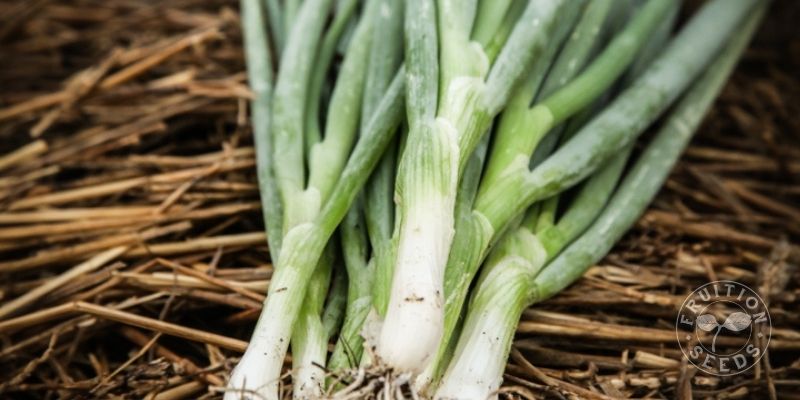
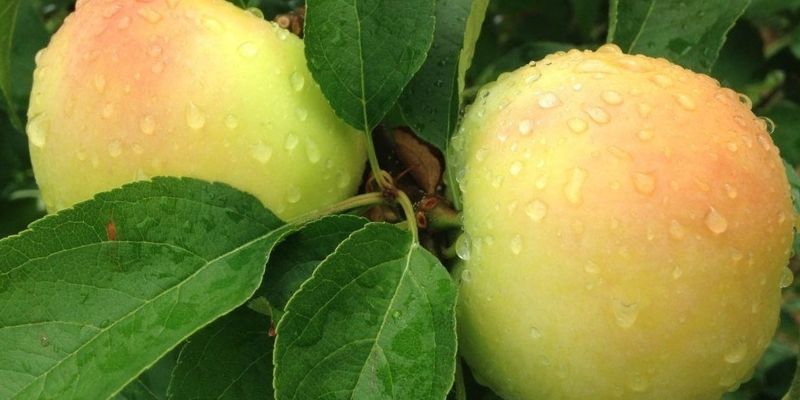
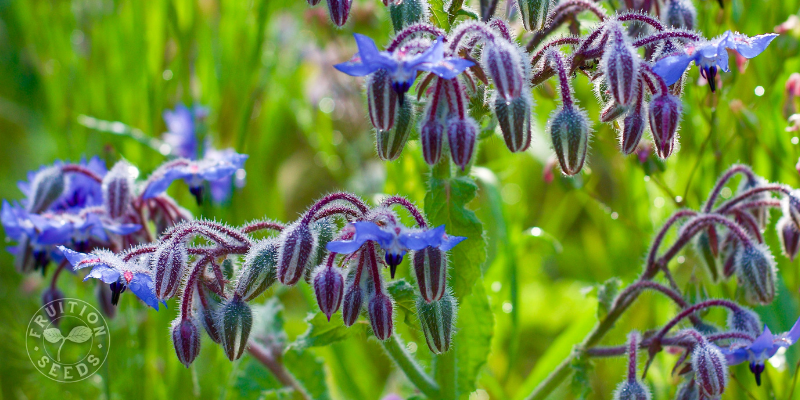
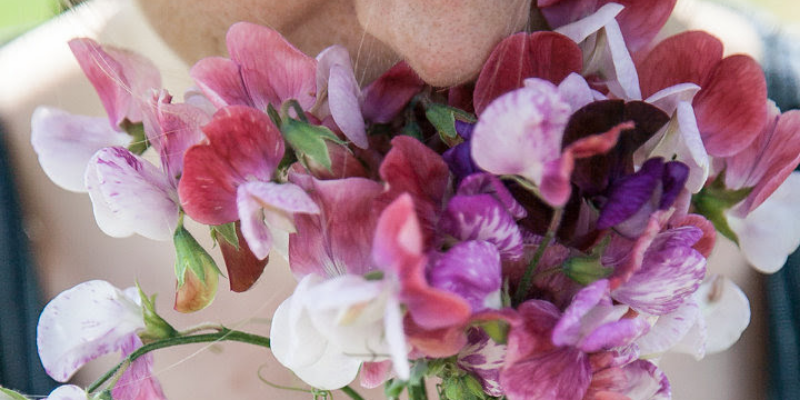
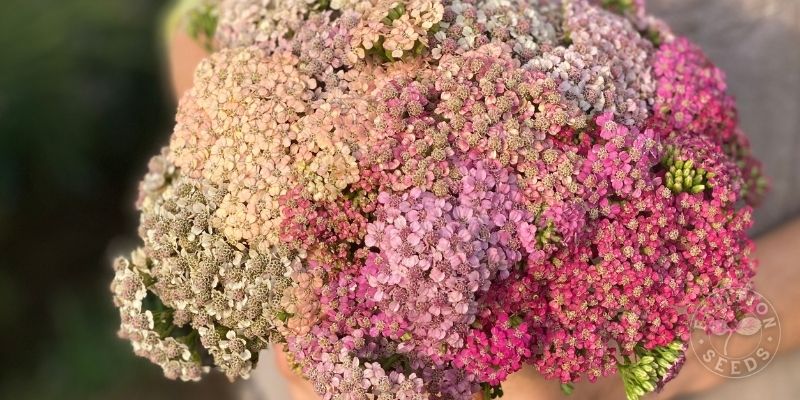
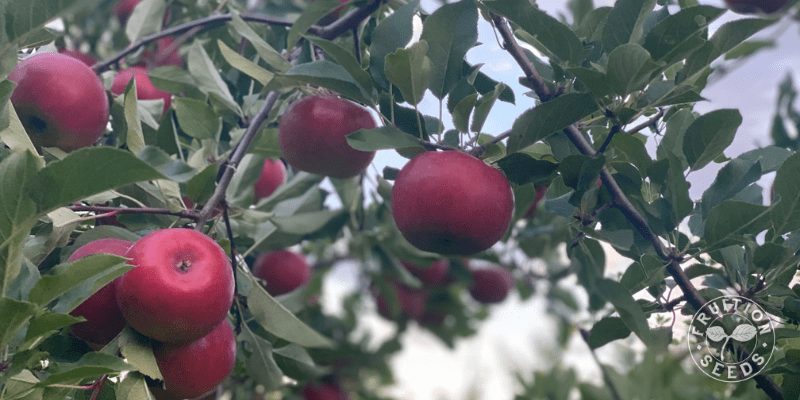
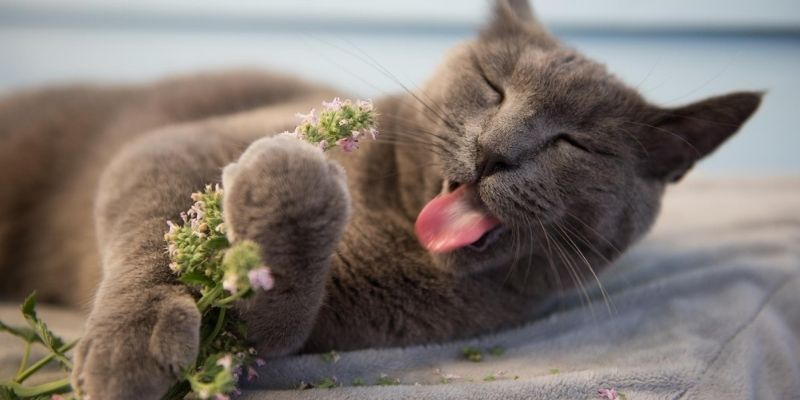
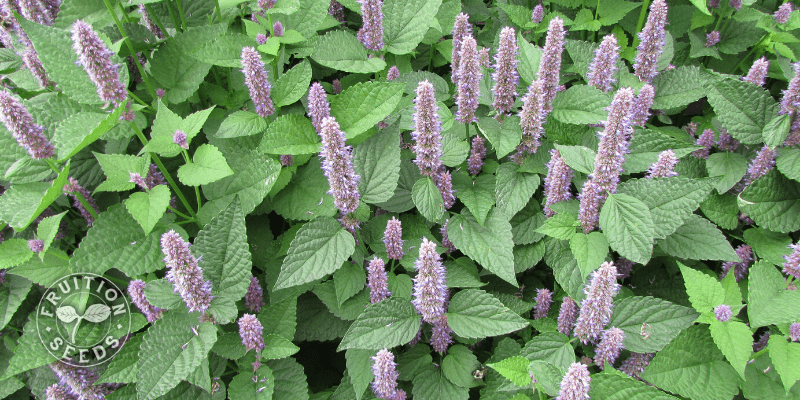
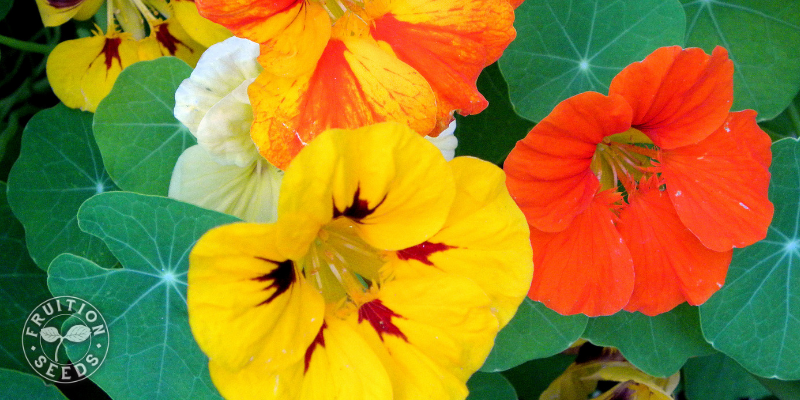
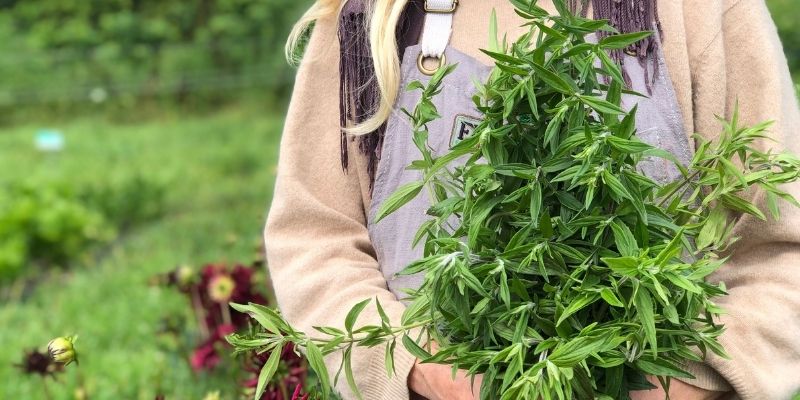
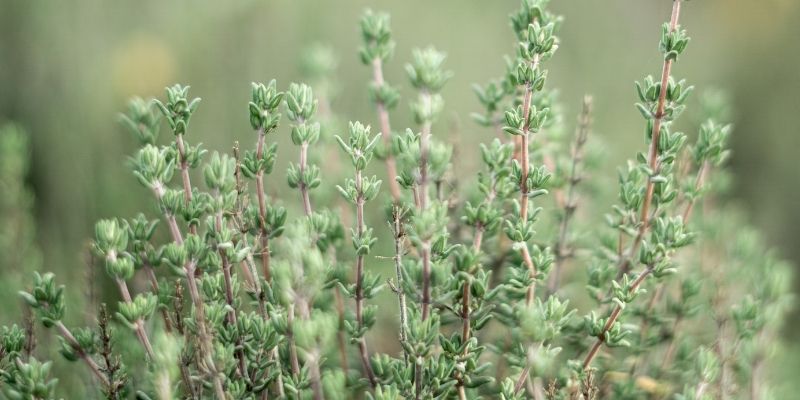
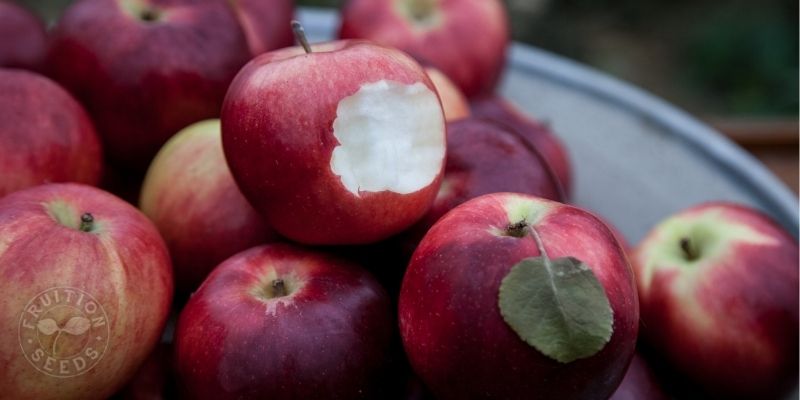
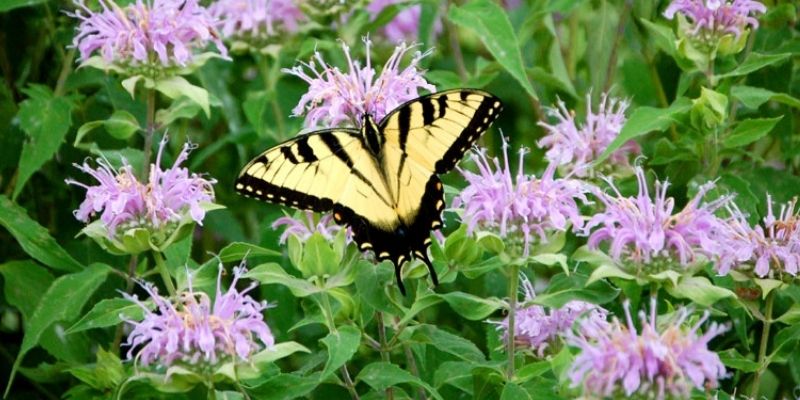
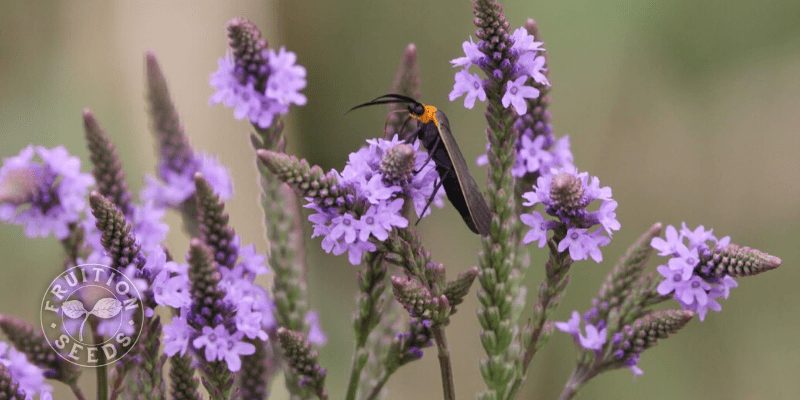
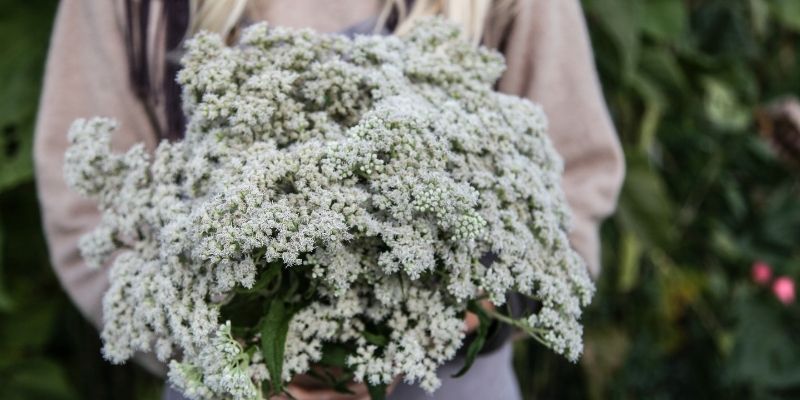
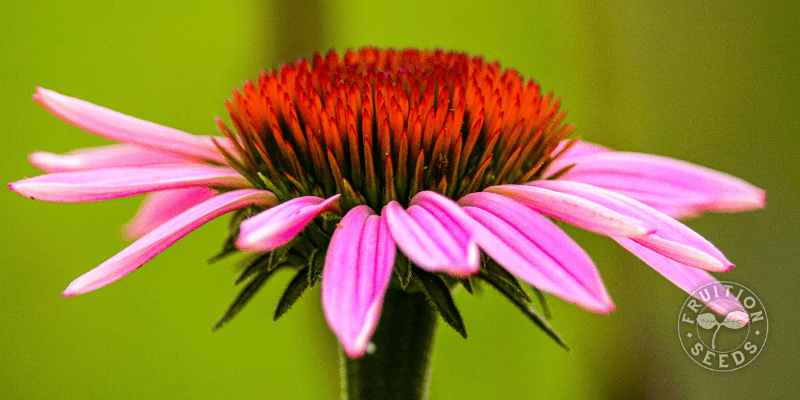
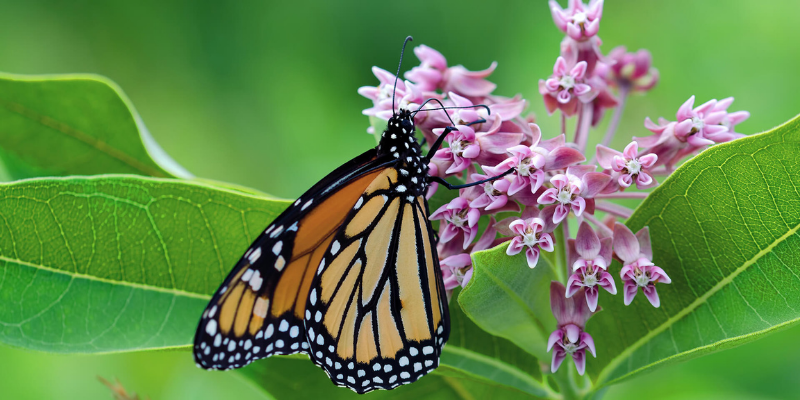
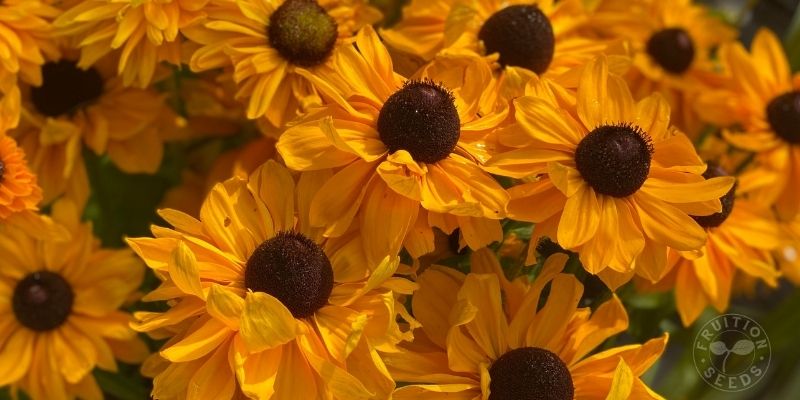
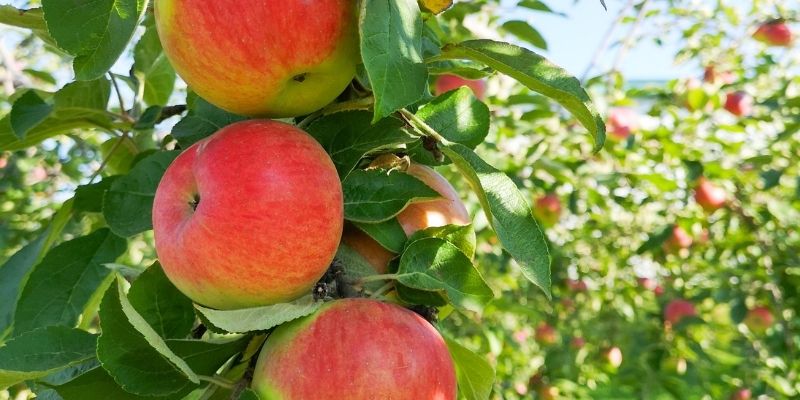
Thanks for this excellent informative blog.
Hi Patricia, We are glad to hear you found this blog helpful! <3
Wonderful article and information, thank you.
Comfrey was mentioned but disregarded and Nettle was not included.
The Apple Grower by Michael Phillips suggests growing both Nettle and Comfrey as weed suppressors and a source of important vitamins in organic sprays to be used on orchard plants. Use the plants to to brew a tea. Mix with EM1, seaweed/fish mix, molasses, and neem oil as a preventative.
Thank you for this post, very helpful! One Q, would “common flax” work well within the hedge of the orchard? Thank You
Hi Shelly, It is a fairly wispy plant and benefits from cultivation and weed control. So long as you offer some care it will do fine. But it is not a scatter and forget success story.
Very helpful!Do you have to worry about the Mountain Mint spreading by rhizome and competing with the trees? I’m wondering if I need to plant them in containers like other mint.
Hi Chelle, Thanks for reaching out! We recommend planting in a container as it will spread rapidly.
Melissa